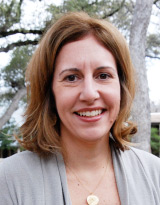The pounding rain was the least of our problems, though we didn’t know it at the time. My son and I were traveling home to Austin after a week on the coast. I gripped the wheel and squinted into the watery I-10 corridor as Gabe pretended to read. Some cars poked along with us. Others bullied their way by in a hair-raising blur.
As we approached Katy, just west of Houston, the rain let up. I could breathe again. Tentatively, I accelerated. Buildings emerged from the mist. Gabe began to read for real. I moved back into the fast lane. Everything would be fine!
And it was, for about two minutes, until traffic began to thicken and slow. Gabe looked at his phone and said “Mm, traffic jam,” in what I now know was a naïve tone of voice.
Soon we had come to a complete stop. We were trapped in the “fast lane,” walled in on three sides by eighteen-wheelers, F150s, and Escalades. A hazardous waste vehicle and several EMS units crawled up the shoulder toward whatever unthinkable disaster lay ahead.
Just as we learned (via Google Maps) that it would take 1 hour and 47 minutes to travel the next three miles, everyone else learned this fact, too. Drivers began forcing their way across multiple lanes toward an exit. Others bumped off the shoulder and over the bank to the access road. Still others, taking complete leave of their senses, doubled back into an on-ramp. The desperation reminded me of a scene from Titanic.
The alternate route, said Google, would funnel us past the disaster in a mere 34 minutes. Gabe endorsed this plan from the comfort of the passenger seat. I resisted. I didn’t have the backbone. I couldn’t imagine entering the chaos, becoming one of those hostile motorists pushing lawlessly across the lanes. Besides, I reasoned, the alternate route would soon be equally congested—and surely, surely, I-10 would soon be cleared. (I tried not to imagine what, or whom, might need clearing.)
No, I decided. We would stay put. We would be patient. We would be Zen.
And to pass the time, we would play the alphabet game!
Gabe, ever calm, humored me. He pulled deftly into the lead, finding needed letters on neighboring cars and trucks. “A—Admiralty. B—Braunfels. C—Chevrolet.”
I got stuck somewhere around A.
When Gabe was on L, he glanced back to the right, hoping a new vehicle had presented itself for plundering. I glanced back, as well.
“Oh,” we both said.
What we saw was not a vehicle, but no vehicle at all. A pocket of road had bizarrely opened up. I could easily slip into it if I wanted to—which, I reminded us, I didn’t.
But the gap persisted. No frantic driver darted into it. The lagging car did not creep up. Nobody honked or bullied. The gap began to take on the character of a rift in the space-time continuum, a portal held open by unseen hands just for us.
It began to seem silly not to slip into it, and so finally, grudgingly, I did.
Within minutes, another aperture had opened to starboard, and into it I had slipped.
This happened again, and yet again.
Soon, we were on an alternate route of Gabe’s devising. We cruised north on a virtually empty road toward Highway 290, which then carried us homeward through rain-washed farmland dotted with grazing herds and tender wildflowers. A gentle mist diffused the evening light and made cows’ flanks and grassy knolls glow. Motion, light, and beauty all at once—it was exhilarating.
I’m not sure why those gaps in the traffic appeared when they did. Knowing that people a few miles ahead of us were hurt or maybe worse, I can’t seriously invoke the word “miracle” or the concept of divine deliverance.
What I can do, though, is resolve to keep noticing the gaps—but with joy rather than fear. I can resolve to move into them when they ask me to, in spite of my own private certainties about where I should be and how I should proceed.
I can loosen my grip, stop dictating games, and risk getting unstuck. I can hope to sail, and I can choose to see.
 Dr. Claire Colombo is the director of the Center for Writing and Creative Expression at the seminary and has served on the seminary’s adjunct faculty since 2012. As a freelance writer, she develops religion and language arts curricula for Loyola Press of Chicago. She is a regular contributor to their “Finding God” magazine and newsletters.
Dr. Claire Colombo is the director of the Center for Writing and Creative Expression at the seminary and has served on the seminary’s adjunct faculty since 2012. As a freelance writer, she develops religion and language arts curricula for Loyola Press of Chicago. She is a regular contributor to their “Finding God” magazine and newsletters.

